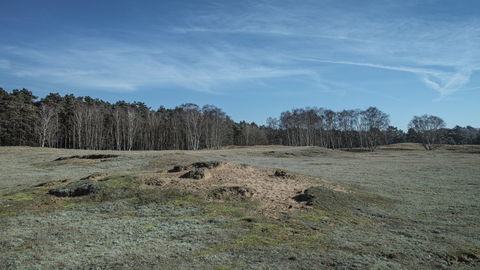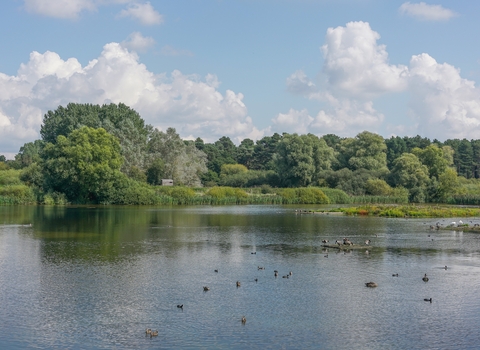
By Steve Aylward
By Steve Aylward

By Steve Aylward
By Steve Aylward
Wangford Warren Nature Reserve
Know before you go
Dogs
Assistance dogs only
When to visit
Opening times
No access March - AugustBest time to visit
September to OctoberAbout the reserve
When Neolithic settlers first came to the Breckland, which translates roughly into broken land – they cleared the native forests to farm but soon found the thin glacial soils were not capable of sustaining crops for long.
The combination of their movements over the landscape, combined with the introduction of sheep and rabbit, which nibbled grass and vegetation down to the roots, over a relatively short period of time exposed the sandy soil. Climate has played its part too. The Brecklands is one of the warmest and driest parts of the UK, a factor that quickened the erosion of the soil and left vegetation, which might have otherwise anchored the shifting sand, sparse and stunted.
Before large swathes of the Brecks were eventually tamed by forestry and modern farming, its sandy soils formed a network of undulating dunes that stretched from Brandon to Lakenheath. Indeed, it was not unusual for villages to be inundated by the shifting sands of the Brecks, with the road leading to Wangford blocked by a marching dune just decades ago.
The reserve at Wangford Warren then is a snapshot of a past landscape, but these 38 acres are far more than just a relic.
The panorama of mounds and dunes – now stabilised by sand sedge – together with grazed grass and open disturbed soil are home to a number of rare specialist plants and animals. Unusual solitary wasps and bees burrow into the bare sand while ground beetles roam a surface that is still patrolled by herds of rabbits.
Wangford Warren is also only one of two inland sites in Britain that sustains the beautiful grey hair-grass and supports other rarities such as shepherd’s cress, bearded fescue and beautiful reindeer moss.
Although smaller than many Suffolk Wildlife Trust reserves, the site warrants more than a quick look around. Writing in H is for Hawk Helen Macdonald memorably described this landscape as ‘a ramshackle wildness in which people and the land have conspired to strangeness’.
It is perhaps this strangeness that makes walking over Wangford Warren such a sensory experience; from the dried sea-weed crackle of the lichen underfoot to the heat-haze shimmering over the land-locked dunes.


